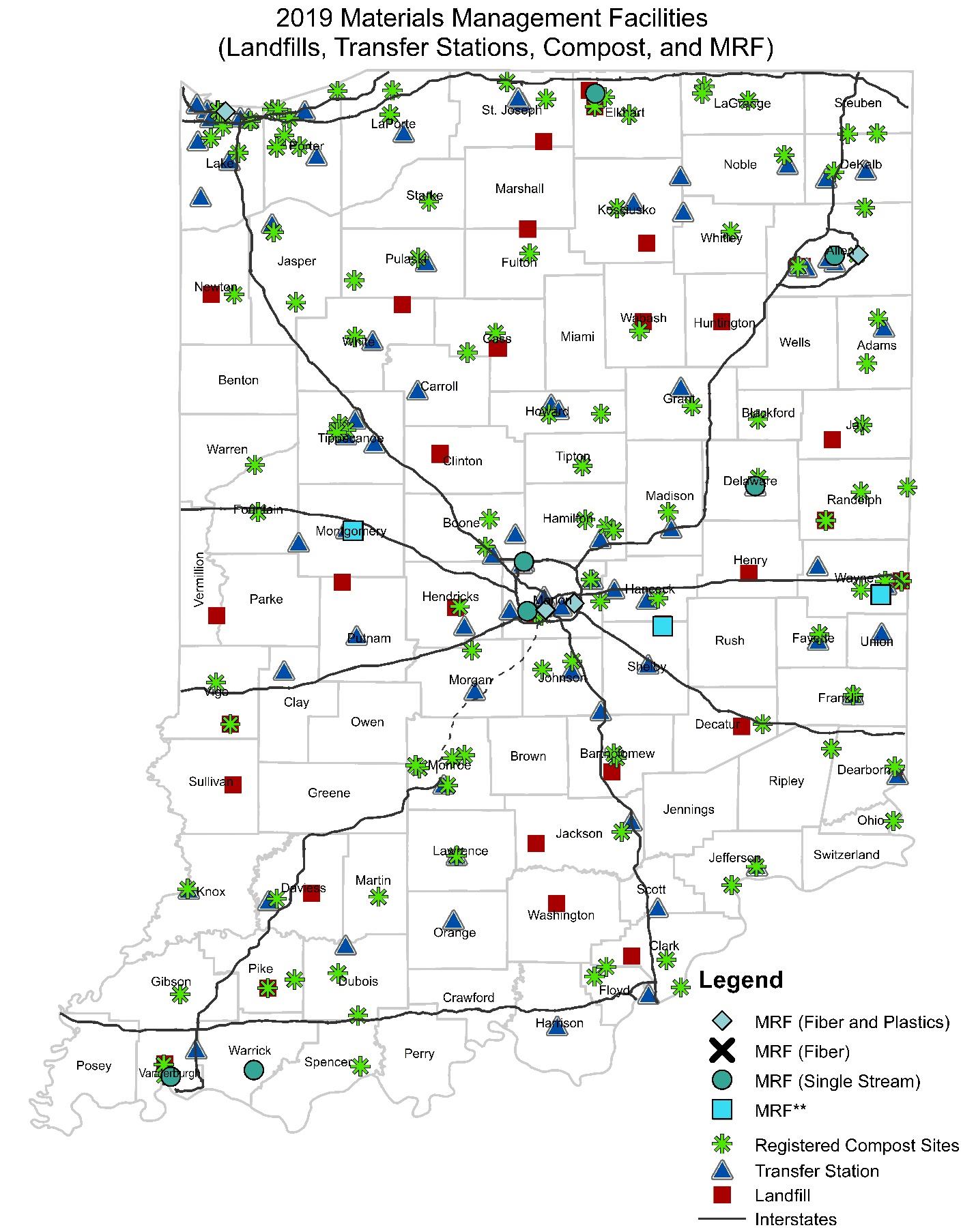Commissioned by: The Recycling Market Development Board
Prepared by: GT Environmental
Background
GT Environmental was contracted to complete a comprehensive review and analysis of Indiana’s recycling infrastructure and its economic impact. In addition, the report includes specific recommendations to improve statewide recycling to maximize its impact in the circular economy.
The Recycling Infrastructure and Economic Impact Study (Study) [ZIP] provides key analysis for economic and program development for a more sustainable solid waste system. The study provides perspective for the current solid waste and recycling infrastructure in Indiana (with maps) that provide a visual representation of the location of recycling collection programs, organics processing, recycling processing, and solid waste disposal destinations. The economic portion of the study focuses on the impact of two areas of the circular economy in Indiana, the supply side provided by the collection and processing of recyclables performed by the recycling industry and the demand side represented by manufacturers of recycled commodities.
The study was conducted from June 2020 through May 2021 during the COVID-19 pandemic. While Indiana’s solid waste system was significantly impacted by COVID-19 in 2020, the study used 2019 data which was mostly unaffected by the pandemic.
The study uses the recycling tonnages from the IDEM 2019 Recycling Activity Report with additional data from the surveys to solid waste districts management districts, communities, recycling industry, and manufacturers. Additional background information on methodology can be found in part C of the study’s Introduction.
Current Waste and Recycling Infrastructure
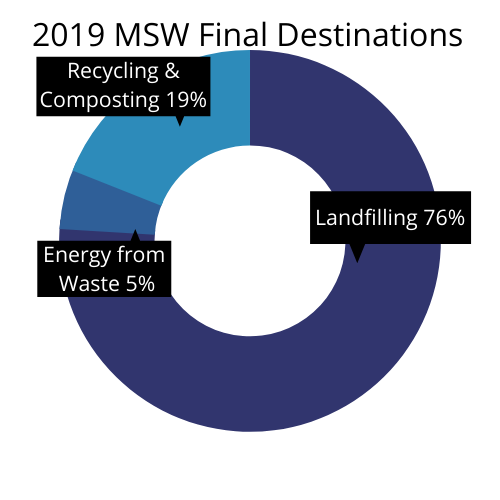
Indiana’s waste and recycling infrastructure for municipal solid waste (MSW) collected approximately 8.8 million tons in 2019 with 76% being disposed of in landfills, 5% diverted to waste-to-energy, and 19% diverted through recycling. This recycling rate falls below the national rate of 32% calculated by U.S. Environmental Protection Agency (U.S. EPA), and the state’s goal of 50% (IC 13-20-25-1).
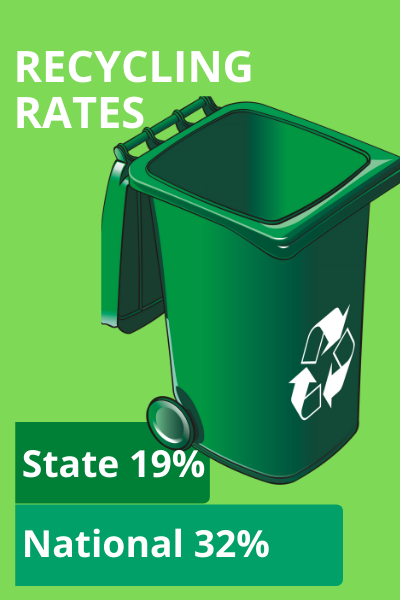
Indiana’s recycling rate is calculated by estimating the MSW generated against the recyclable materials reported to IDEM. The measurement includes residential, commercial, and industrial recycling that is reported by Indiana recyclers and follows the standard established by the U.S. EPA: Recycling Rate (%) = MSW Recovered for Recycling and Composting (tons)/MSW Generation (tons) x 100
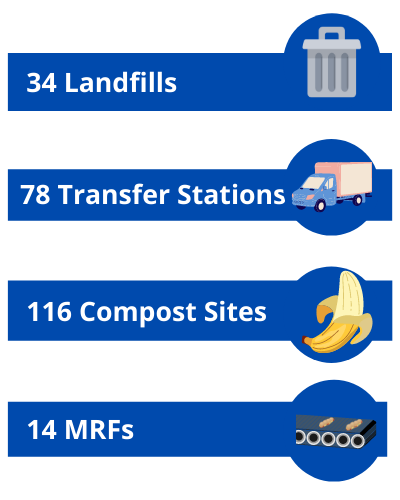
The study shows that the state has a broad solid waste infrastructure that supported by 34 landfills, 78 transfer stations, 116 compost facilities, and 14 material recovery facilities (MRFs). This infrastructure provides 89 of our 92 counties with access to either curbside or drop-off recycling services.
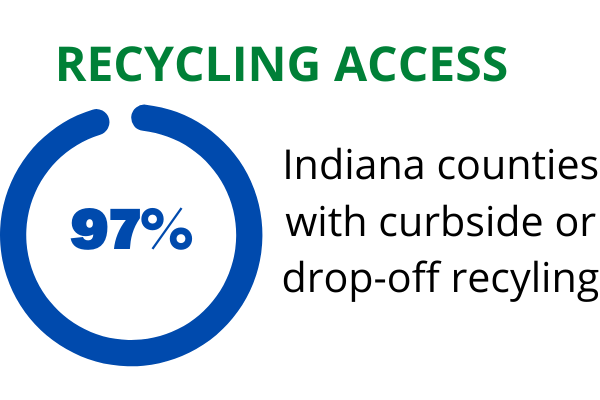
Indiana's Recycling Economic Impact
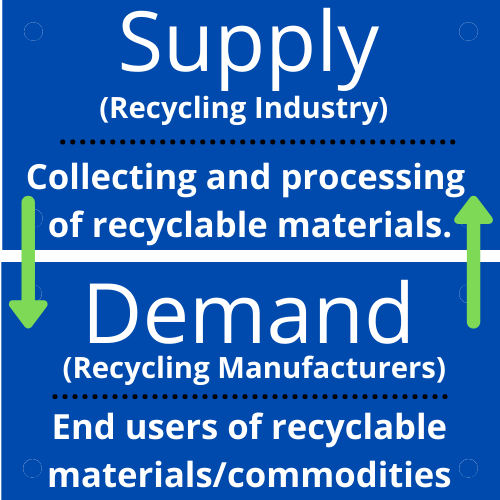
The economic portion of the study focuses on the supply and demand of Indiana’s circular economy.
Based on tonnages reported to IDEM, in 2019, 397,831 tons of recycled commodities (glass, metals, paper, and plastic) were provided to manufacturers in Indiana, while 405,397 tons of recycled commodities were exported to out-of-state manufacturers. The total commodity value of the reported recyclables generated and used in-state is more than $30 million.
The study assessed direct, indirect, and induced economic contributions of the recycling industry and manufacturers. Indirect jobs are the inter-industry impacts attributed to company spending on goods and services and induced impacts include the impacts of household spending by the employees generated by the direct and indirect impacts.
The Recycling Industry
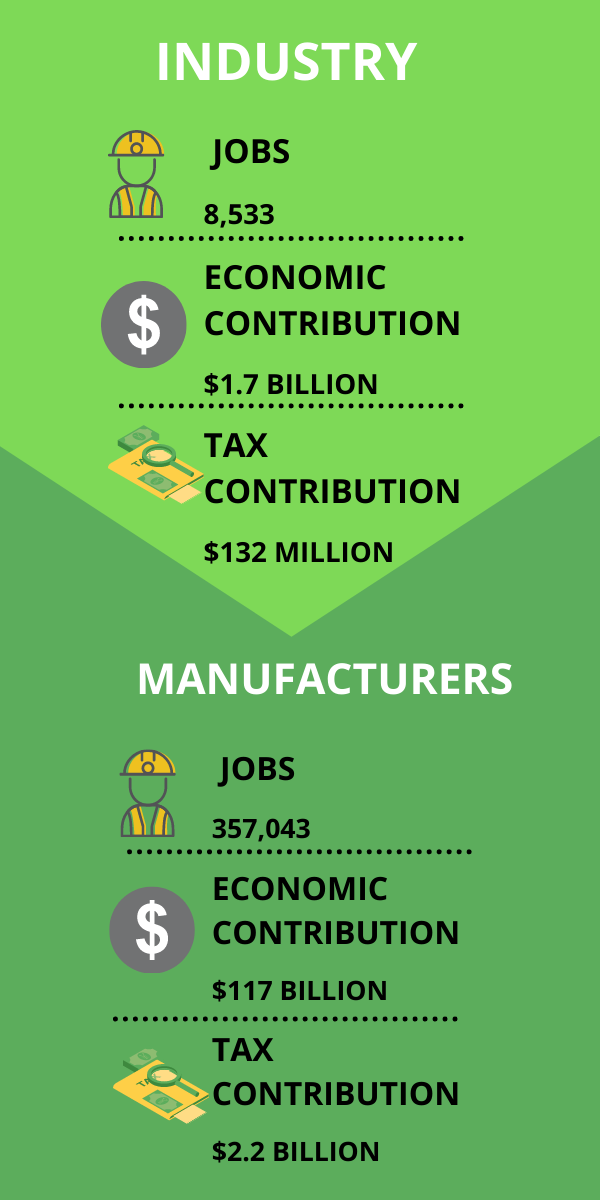
Indiana recycling collectors, brokers, and processors accounted for 8,533 direct, in-direct, and induced jobs in in 2019. Those jobs’ effects add $1.7 billion to Indiana’s economy through wages, benefits, and spending.
The total tax contribution to Indiana and its cities, towns, and counties by companies using recycled materials as part of their production process is estimated to be over $131 million.
Recycling Manufacturers
Companies that use recycled commodities provided by the recycling industry to manufacture products produced with recycled content are primarily engaged in a wide range of manufacturing efforts. Potential manufacturers identified in the study account for 357,043 direct, in-direct, and induced jobs for a total economic estimated impact of $117 billion.
The total tax contribution of companies using recycled material as part of the manufacturing process exceed $2.2 billion dollars from cities, towns, counties, and the State of Indiana. The State of Indiana receives the largest impact of nearly $1.7 billion.

